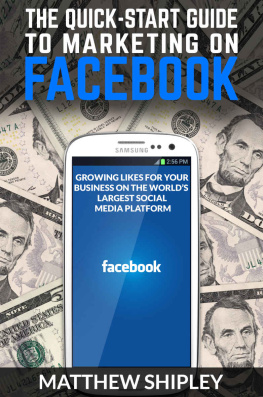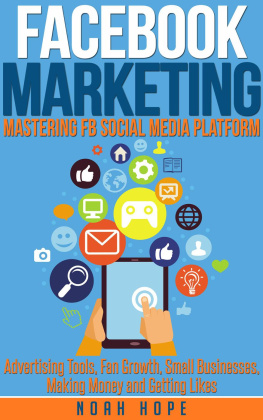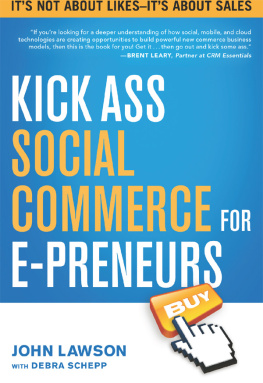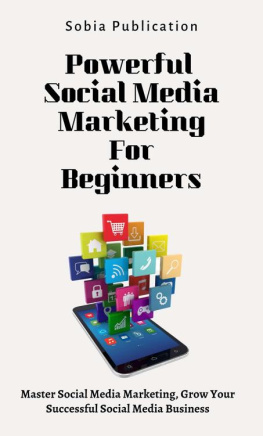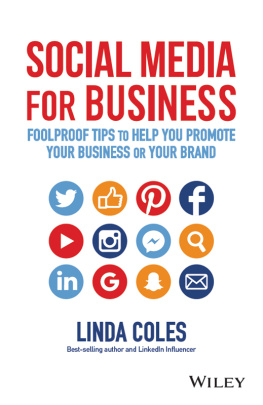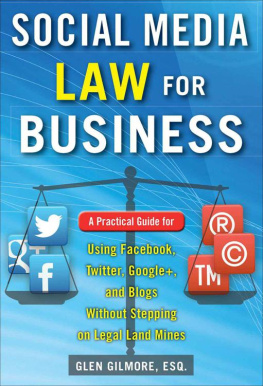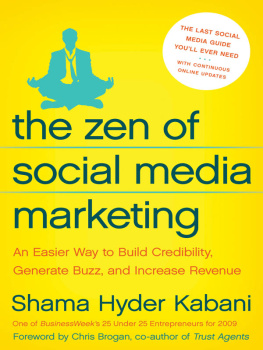
Contents
Why Do Business on Facebook?
How Does F-commerce Work?
Completing F-commerce Transactions Inside Facebook
Facebook Storefronts as Gateways to Brand Sites
Social Marketing with Facebook Plug-ins
Linking F-commerce and E-commerce
Utilizing Facebook Credits for F-commerce
Creating Convenience with F-commerce Gift Cards
F-commerce Exclusive Offers, Discounts, and Rewards
Customer Interaction and F-commerce
Engaging Customers on Facebook
Customer Support as Added Value on Facebook
Creating Word-of-Mouth Buzz to Drive F-commerce
Socially Responsible F-commerce
Customer Service Enhanced with F-commerce
Capturing Customer Data with F-commerce
Introduction
First there was e-commerce. Amazon and eBay led the way. This has been followed by thousands of retailers, from Kmart to Delta to 1-800-Flowers to Home Depot, selling billions of dollars of merchandize each year on websites. In those models, an individual company has to promote its e-commerce platform to get people there to buy.
According to audience measurement and tracking firm comScore, currently U.S. retail e-commerce spending went up 14 percent Online retail spending reached $37.5 billion, primarily due to an increase in the number of buyers (up 16 percent), with 70 percent of all Internet users making at least one online purchase. comScore chairman Gian Fulgoni states that almost $1 in every $10 of discretionary spending in the U.S. now occurs online.
But what if a company tapped into the communities where their customers were already on and offered them the same things there? Social Commerce does just that. Simply stated, it is e-commerce on social networking sites.
From the customers point of view, what would matter most:
- A half-dozen reviews from people you dont know?
- A coupon for 10 percent off a product for your first visit to the site?
- Recommendations of twenty of your best friends that bought, use, and love the same product?
Social networking sites are allowing brands to use plug-ins and widgets to connect and encourage customers friends to comment, displaying visible discussion threads, thereby creating social shopping experiences that are fueled by word-of-mouth marketing. While e-review sites have driven e-commerce (or prevented it if there are a lot of negative comments about a product or service), the idea of having people you know comment and recommend products they like is the premise of Facebook commerce, also known as f-commerce.
With over 750 million active users on Facebook, there are more potential customers using Facebook than there are logging into eBay and Amazon combined. Some customers may not see Facebook as a purchasing platform yet, but more and more businesses are adding features so customers can browse and/or buy their products on Facebook. By reading this book you will be at the forefront of a huge movement in social media commerce.
This e-book is about how Facebook is transforming into an e-commerce platform. It is written to help you understand what f-commerce means to business owners, large and small. It includes practical examples of brands that have deployed Facebook e-commerce and how you can use f-commerce in your business.
Chapter 1
Why Do Business on Facebook?
Why is it important for brands to have a Facebook e-commerce capability? Mike Fauscette, an analyst at IDC Consulting says, In three to five years, 10 percent to 15 percent of total consumer spending in developed countries may go through sites such as Facebook.
Why might Fauscette make this prediction? Facebook users spend 700 billion minutes per month in an active, relaxed environment. The average Facebook user is connected to 130 friends. They belong to 80 interest groups. Through their detailed profiles and by posting on average 90 pieces of content per month, Facebook users make their preferences known. Word-of-mouth (WOM) recommendations or buyer-beware messages are prevalent.
Todays social customer is not shy about posting their thoughts about a brand, its products and services, or the experiences they have with the brand. The unique selling opportunities Facebook can offer has gotten the attention of digital marketers and PR professionals. As social media plays an increasingly more important role in purchasing decisions, brands are allocating larger parts of their marketing budgets to engage with their consumers on platforms like Facebook and Twitter.
Many brands, big and small, are wondering if they should go down this path. How is this different than the e-commerce they already offer? And does f-commerce mean that you have to get rid of your traditional e-commerce platform? Its these and other questions we will address in this e-book.
Be Where Your Customers Are
For many brands, Facebook is where their customers are online. And the mantra in social media? A brand needs to be where their customers are within the social net . A brand cant expect that their customers will come to them (or their site). The theory of f-commerce is that customers should be able to buy wherever and whenever they like. If they are on Facebook then they should be able, among many other things, to purchase products while they interact with their friends and family.
Some people have questioned whether its even possible to sell customer products in the midst of them using Facebook to catch up with their friends and family. Perhaps thats all people want to do while on Facebook, i.e., they dont want their social network to sell them stuff while they are socializing. And if that is the case, then perhaps brands should keep their commerce offerings on their e-commerce sites.
However, while some people are of the opinion that people visit Facebook just to catch up with their friends and family, a JWT (James Walter Thompson) study showed that 48 percent of millennials (aged 2033) would like to buy directly on Facebook from the places they shop. In another study industry study, 25 percent of customers aged 1834 years old stated they use Facebook to interact with merchants. How many companies are planning to increase their funding for social commerce according to this study? Ninety percent will increase funding for social commerce initiatives by 8 percent.
There is a trend, and that trend is the blending of social networks with e-commerce. The skill with which brands do this will directly affect the success not only of their own individual brand, but of the industry as a whole. If social networking shopping sites are not delivered in the spirit of what the customer wants, it will fail. If not for this point alone, brands need to pay attention to f-commerce as an example of how shopping can be integrated within a social network.
The Future of One-Stop Facebook Shopping
So lets say you have a vacation coming up. You want to look for good rates on airline tickets. Whats the difference between logging onto an airline website vs. being able to research and purchase tickets inside of an already established social network? First, you may want to ask your friends what airline they flew on, how the service and food was, and what to watch out for. You might find that information on a travel site, but you may not be able to ask your friends their opinions.
So the point is that when you are on a regular e-commerce site you may be just getting the take from people you dont actually know. This input is important, because you arent just trusting the brands marketing spin. You are getting the take of other human beings. But on a social networking site you are connected to your friends and your friends know you and the things you care about the most. You also might want to make plans with a group of people and instead of sending a bunch of e-mails, you might want one place for everyone who is going on the trip to chime in, to plan, and to orchestrate the festivities. Doing so could make coordinating lots of people easier and fuel the enthusiasm for the trip.


